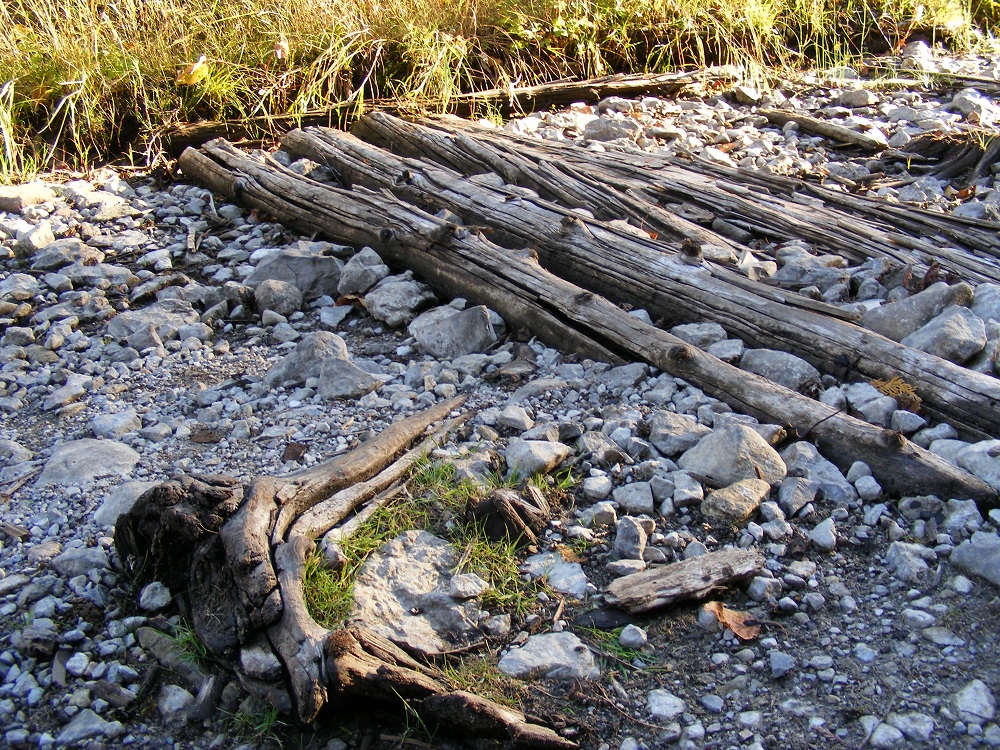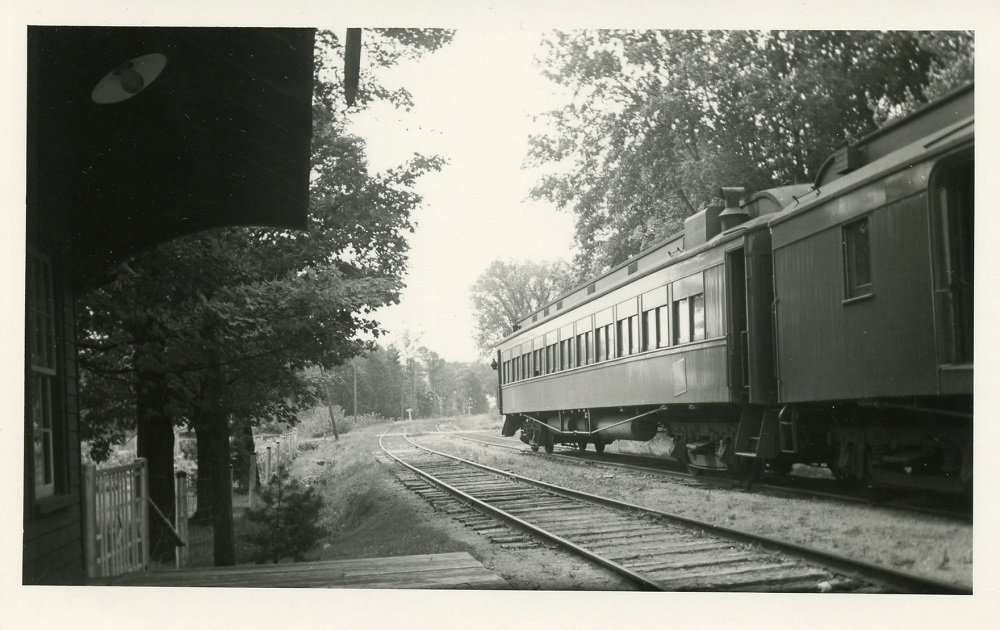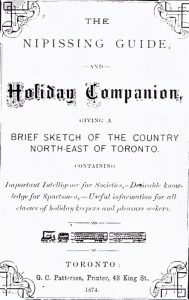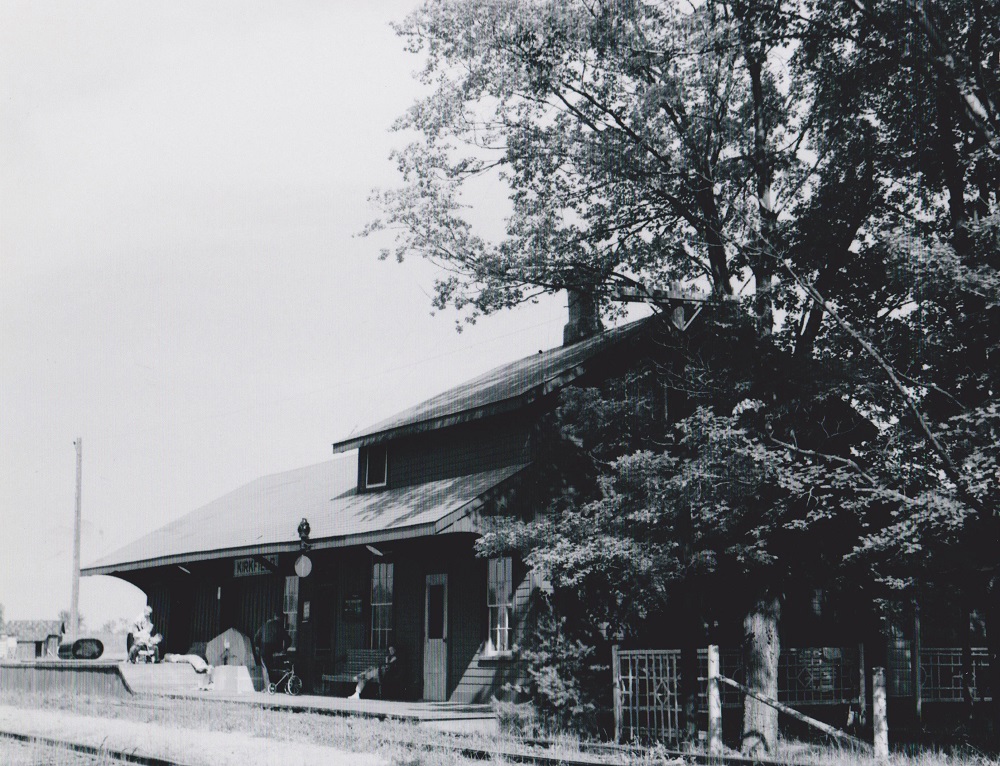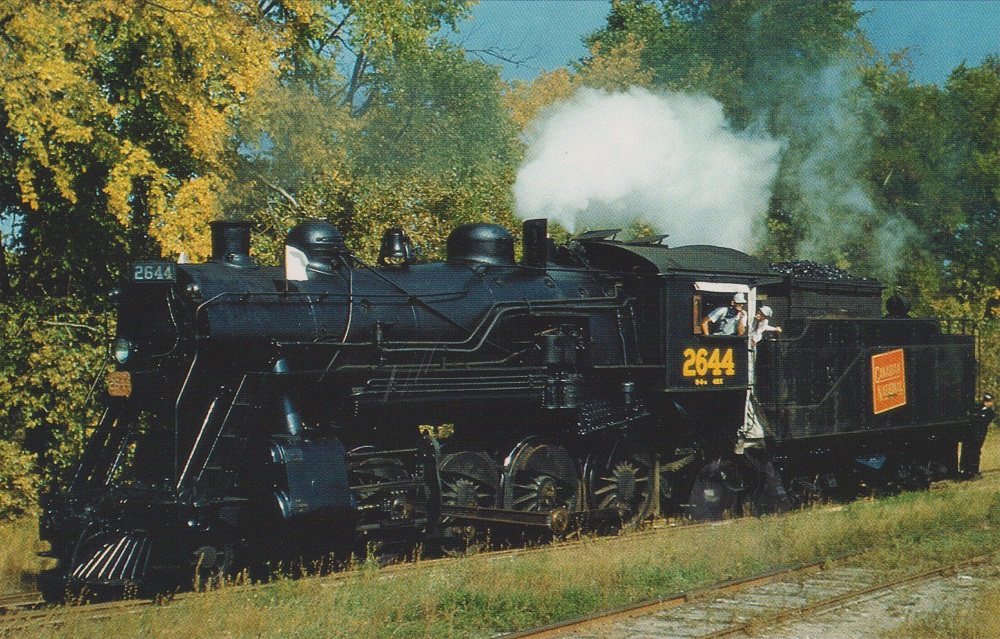Before Cars: From Road to Railway
The first cries of “are we there yet?” heard in northwestern Kawartha Lakes would have come not from the back seat of a car, but from those enduring the slow and cumbersome journey along crude roads that were fashioned from logs laid side by side through the bush. Known as corduroy roads, these rough and ramshackle thoroughfares made a trip of any duration an unpleasant experience.
Traces of the old corduroy roads lingered on into the 1960s, when major highway paving projects erased them from the landscape. Fortunately for the people of northwestern Kawartha Lakes, a faster and more comfortable means of travel had long since surpassed travel by road: the railway.
A narrow-gauge route known as the Toronto & Nipissing Railway (T&N) was chartered in 1868 to link the provincial capital with the resource-rich regions of northern Ontario. Four years later, the rails had reached Coboconk via Kirkfield, Victoria Road and other villages in northwestern Kawartha Lakes.
The T&N lost no time in capitalizing on the benefits that the line afforded to summer tourists. “It is adapted to the means and requirements of every class of society,” bragged The Nipissing Guide and Holiday Companion in 1874. A masterpiece of nineteenth century travel literature, the Guide and Holiday Companion was effusive in its descriptions of Balsam Lake, calling it “a picture of marvelous natural beauty, to which even the inspired hand of an Angelo, or the magic brush of a Raphael, would fail to render justice upon canvas.”
The ensuing years saw the T&N converted to standard-gauge operation, and the line was ultimately absorbed by the Canadian National Railway in 1923. What didn’t change was the route’s prominent place in the local tourism industry. For almost a hundred years, trains ferried picnickers and holiday-goers to their destinations in northwestern Kawartha Lakes.
By 1910, rumours began to swirl about a second railway line that would link Lindsay with Minden via Kirkfield and Norland. This “tourist line” was never constructed, and Highway 35 North would come to serve the same purpose two decades later.
The death of the proposed tourist line, even before construction got underway, was a sign of things to come. As private automobiles became more common, improvements were made to Highways 35 and 46, and railway passenger service declined. Efforts to keep the railways viable were unsuccessful, and the old T&N tracks were removed in 1965.
Tourists had gone from road to rail and back to road again.


